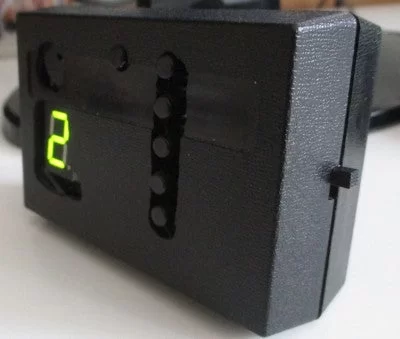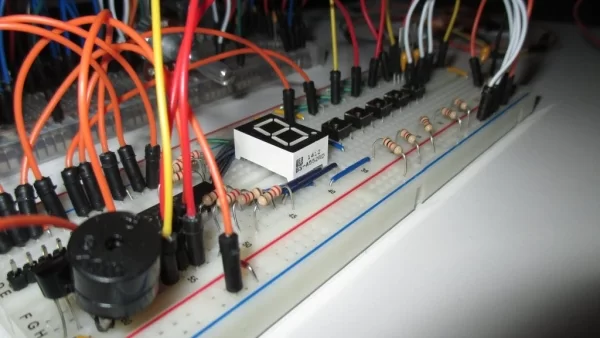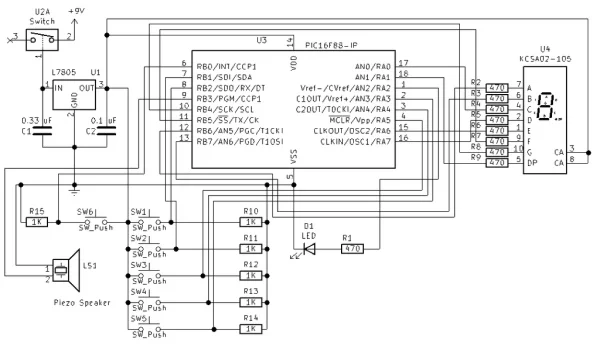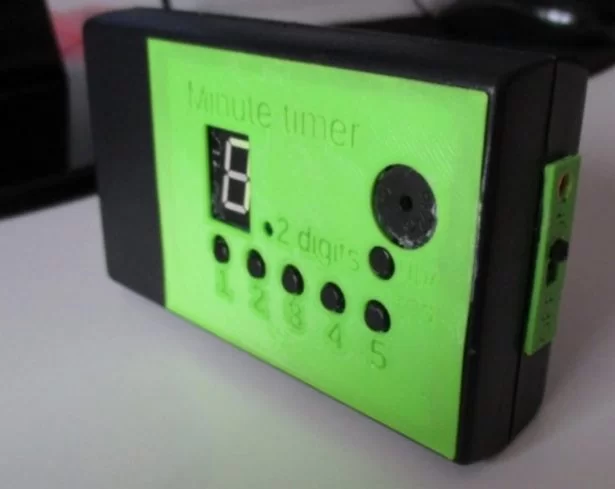Let’s take a look at the simple beginner’s project of the minute timer. The heart of the project is the 8-bit PIC16F88 MCU. The time is shown on the 7-segment display and the timer is operated using 6 buttons. The device is powered by the 9 volt battery.

The time range is from 1 to 99 minutes. The two digits number mode is indicated by the additional green LED that is located on the right side of the display just next to the decimal point sign. The five buttons in a row represent numbers one to five. The sixth button has two functions – to reset the device and to change the current digit that is being entered.
The timer device works the following way. After the main switch is on, a zero digit is displayed and the device is waiting for the buttons to be pressed. There are 3 possibilities:
1) To enter 1 to 5 minutes period just press one of the five buttons. The countdown starts in a few moments.
2) To enter 6 to 9 minutes period press any of the five buttons and right after that repeatedly press the 6th button to achieve the desired value. After each press the value is incremented by 1.
3) To enter 10 to 99 minutes period enter the first digit using the instructions in the previous step. Then press any of the five buttons. The decimal point and the additional green LED turns on indicating that the second digit of the value is being entered. Now press the 6th button repeatedly to adjust the second digit value.
While the countdown is in progress the remaining time is being displayed and the decimal point is periodically blinking. In the case of the two digit number both digits periodicaly appear on the display with the second digit being marked by the decimal point. As long as the remaining count of minutes is a two digit number the additional LED is on.
When the remaining time reaches zero value the sound alarm will be triggered. The device then can be reset by the 6th button to be ready for the next task.
Step 1: Parts Needed

- PIC16F88
- 7- segment display
- 6 buttons
- 1K resistor – 6 pieces
- 470 resistor – 9 pieces
- 7805 voltage regulator
- 0.33 uF capacitor
- 0.1 uF capacitor
- a piezo speaker
- a battery holder
- a switch
Step 2: The Circuit of the Timer

Step 3: The Source Code
The code written in C using MPLAB X IDE and XC8 compiler is available for download:
Attachments
Step 4: The Final Device’s Look

It is up to you whether you only assemble the circuit on the breadboard or create some unique design. I enclose some images of my devices.
Source: The Minute Timer Based on the PIC16F88 MCU

